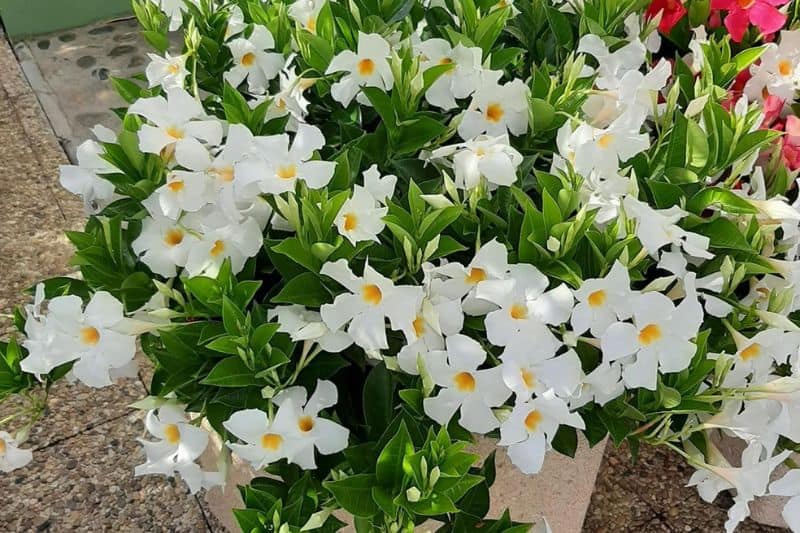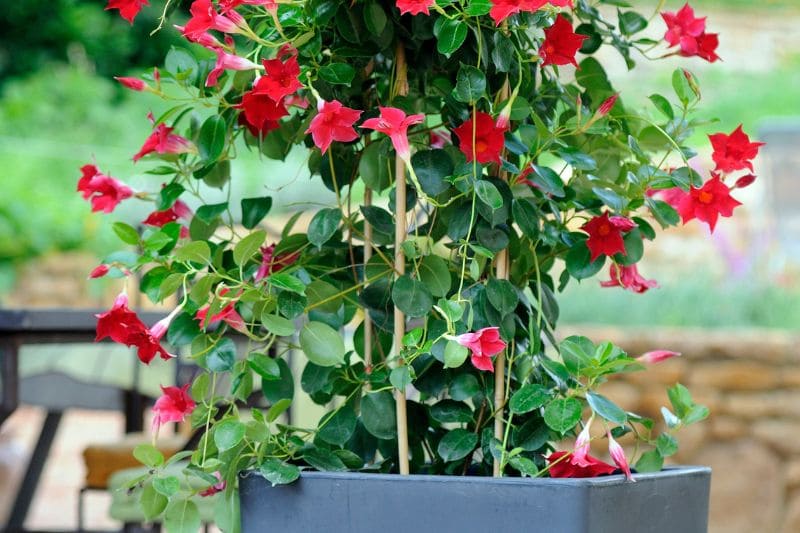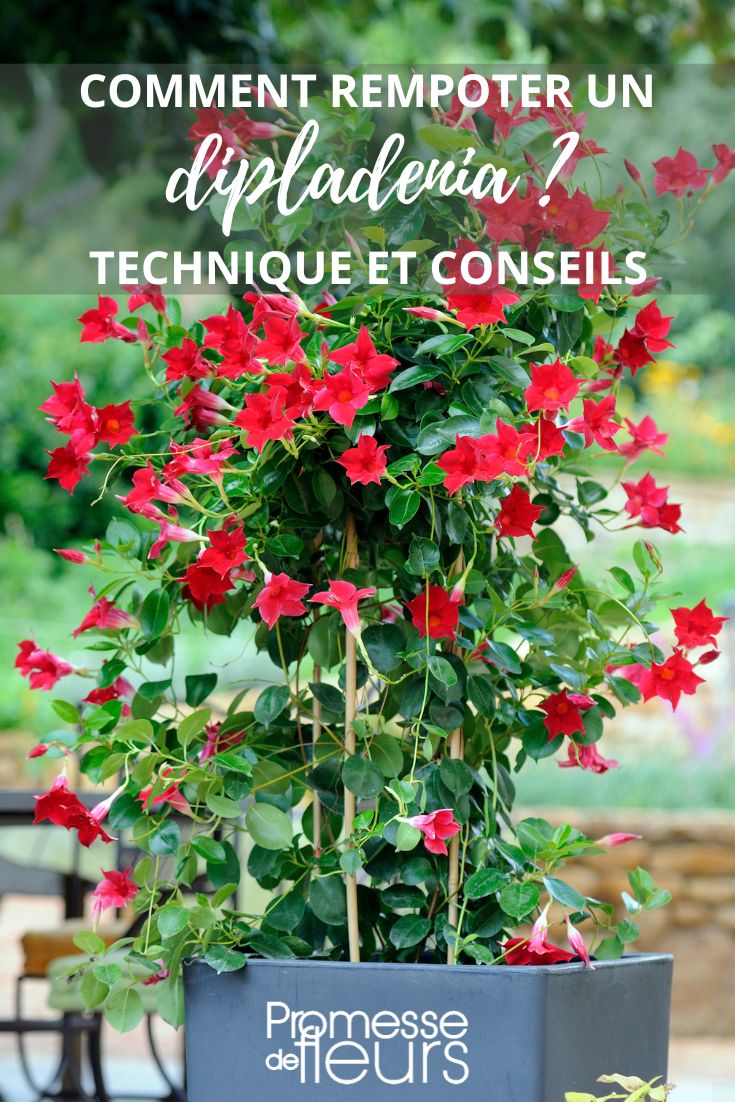Dipladenia (dipladenia), also called Mandevilla, is a much‑liked climbing plant for its glossy leaves and stunning trumpet‑shaped flowers. Native to tropical regions, this plant is hardy and low‑maintenance, but to keep it in top condition, regular repotting is necessary. Discover our tips on when and how to repot your dipladenia.
Why repot dipladenia?
Repotting a plant means giving it a larger pot to help it develop. This stimulates its growth by allowing its roots to find more space to spread and absorb nutrients needed for development. This also helps stimulate flowering.
Over time, potting mix becomes depleted and loses fertility, which reduces its ability to feed the plant properly. By renewing the compost, you provide your dipladenia with rich, fertile soil essential for its health.
Finally, repotting prevents root asphyxiation, which can occur when roots become too cramped or when compacted mix impedes watering and aeration.

When to repot dipladenia?
- Ideal time to repot dipladenia is spring, between March and May. At this time the plant comes out of winter dormancy and begins producing new shoots. This will allow easier adjustment to its new environment.
- Avoid repotting during summer flowering or in winter. In summer the plant devotes energy to flowering, and repotting could stress it. In winter dipladenia is in vegetative rest and will respond less well to this operation.
How often to repot?
- Every 2 to 3 years for an adult dipladenia.
- Every year for a young plant or if you notice roots emerging through drainage holes or the plant seems cramped in its pot.
Repotting dipladenia
Equipment needed for repotting
Before starting, make sure you have all necessary equipment to hand:
- a new pot slightly larger than the current one (about 3 to 5 cm larger in diameter).
- Suitable potting mix: potting compost for Mediterranean plants (or for flowering plants), improved with a little sand for drainage.
- clay pebbles or gravel for the pot base.
- A small trowel, a pair of gloves, and optionally a stake if your dipladenia is already climbing.

Steps to repot dipladenia
1- Water your dipladenia lightly the day before repotting. This makes extraction easier without damaging the roots.
2- Choose a pot with drainage holes to avoid waterlogging, which can cause root rot. The pot should be slightly larger (3 to 5 cm greater in diameter).
3- Place a 2–3 cm layer of clay pebbles or gravel at the bottom of the pot to promote good drainage.
4- Add a layer of fresh potting mix over the clay pebbles. Ideally use potting compost for Mediterranean plants or mix compost for flowering plants (or for geraniums) with sand (river or pit) to improve water drainage.
5- Take your current dipladenia and tip its pot, tapping the sides to loosen the rootball.
6- Loosen the rootball slightly and gently remove excess old compost, without damaging the root system. Check root condition. If any roots are black, soft or damaged, cut them away with scissors disinfected beforehand.
7- Position your dipladenia in the centre of the pot, ensuring the stem base sits about 1–2 cm below the pot rim.
8- Fill the pot with potting mix, firming lightly by hand or with a small trowel to remove air pockets. Leave 1–2 cm below the pot rim to make watering easier.
9- Once plant is in place, water thoroughly to moisten the mix and help roots settle. Ensure water does not stand in the saucer, emptying it after about fifteen minutes.
10- Take the opportunity to fit or adjust a stake. Gently tie shoots with soft ties to avoid damage.
Care after repotting
After repotting, your dipladenia will need a little extra care to adapt to its new environment:
- Light: place in a bright spot, but avoid direct sunlight for the first few weeks after repotting.
- Watering: keep the potting mix slightly moist, but let the compost surface dry between waterings. Be careful not to overwater, as dipladenia dislikes excess moisture.
- Fertiliser: wait about 3–4 weeks after repotting before resuming feeding. A liquid fertiliser for flowering plants, applied every two to three weeks during the growth season, is ideal to stimulate shoot growth and flowering.
Tips
- Watch for signs of stress: if leaves yellow or drop after repotting, this may be due to overwatering or poorly draining potting mix.
- Recycle old compost: you can use it to enrich garden compost.
































Comments